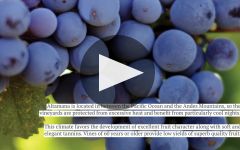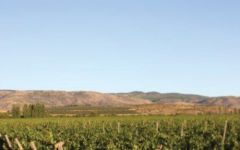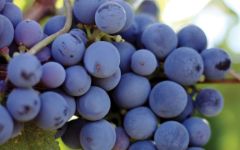Altamana Grande Reserve Malbec 2018
-
Robert
Parker



Product Details
Your Rating
Somm Note
Winemaker Notes
Dark and intense ruby color. Red, dark fruits with floral, herbal and eucalyptus notes. Smooth tannins with elegant grain, complexity with a long finish.
Professional Ratings
-
Robert Parker's Wine Advocate
I found the 2018 Grande Reserve Malbec too oaky for my taste, a little earthy too. It fermented for 25 days, and 75% of the volume matured in 600-liter oak barrels for nine months. It has moderate ripeness, 13.5% alcohol and mellow acidity and freshness. It comes through as a little rustic with abundant dusty tannins.
Other Vintages
2015-
Robert
Parker -
Wine
Enthusiast
-
Robert
Parker
-
Wine
Spectator







Altamana was established in 2012 with the goal of resurrecting century-old Malbec vines planted by the pioneers of the Chilean wine industry.
Founders Count Patrick d'Aulan and Didier Debono have a successful track record together, most recently with highly acclaimed Alta Vista Winery in Mendoza, Argentina, owned by d'Aulan with Debono as Consulting Winemaker. Alta Vista was the first to craft single vineyard Malbec wines from Argentina; these wines have become benchmarks, achieving some of the highest ratings ever awarded to Argentine wines. The rediscovery of Chile's rare and historic old Malbec vineyards could not be in better hands.

Celebrated for its bold flavors and supple texture, Malbec has enjoyed runaway success in Argentina since the late 20th century. The grape originated in Bordeaux, France, where it historically contributed color and tannin to blends. A French agronomist, who saw great potential for the variety in Mendoza’s hot, high-altitude landscape, brought Malbec to Argentina in 1868. Somm Secret—If you’re trying to please a crowd, Malbec is generally a safe bet with its combination of dense fruit and soft tannins.

Maule is the Central Valley’s most southern and coolest zone, reaching a southern latitude of 35°S, yet it is still warmer and drier than Bío-Bío to its south. The Maule Valley enjoys success with a unique set of grapes.
It lays claim to the local variety, Pais (synonymous with Tinta Pais, which is actually Tempranillo), which has dominated much of the region’s area under vine until the recent past. Now many growers, not confined by the tradition and regulations of the Old World, also successfully grow Cabernet Sauvignon.
While Maule’s total area under vine remains relatively static, its old Carignan vineyards are undergoing a great revival. The VIGNO (Vignadores del Carignan Vintners) group, an association in charge of promoting this long-forgotten variety, is getting fantastic results from the old vines in its dry-farmed coastal zones.
The Maule includes the subregions of Talca, San Clemente, San Javier, Parral, Linares and Cauquenes.
